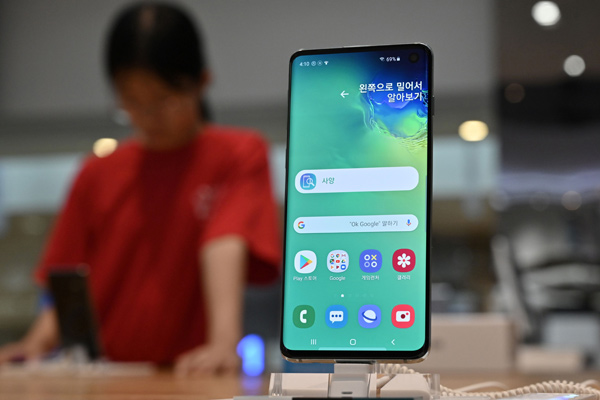SEOUL — The world's biggest smartphone and memory chip maker Samsung Electronics reported second-quarter net profits slumping by more than half in the face of a weakening chip market, and as a trade row builds between Seoul and Tokyo.
The flagship subsidiary of the sprawling Samsung Group has enjoyed record profits in recent years despite a series of setbacks but is now struggling with chip prices falling as global supply increases.
Net profits in the three months to June were 5.18 trillion won ($4.38 billion), Samsung Electronics said in a statement on Wednesday, down 53 per cent year-on-year.
"The weakness and price declines in the memory chip market persisted... despite a limited recovery in demand," it said.
In mobile phones, it achieved "stronger shipments on new mass-market models but was overall weighed down by slower sales of flagship models and increased marketing expenses", it added.
The results come hours after Apple, one of Samsung's main rivals, delivered better-than-expected results as growth from services helped offset weak iPhone sales.
The US firm has been shifting focus to digital content and services as sales of its flagship device weaken.
Facing hardware challenges of its own, Samsung launched its top-end S10 5G smartphone earlier this year after South Korea won the global race to commercially launch the world's first nationwide 5G network.
But in April it was embarrassingly forced to delay the release of its new and hotly anticipated Galaxy Fold phones after reviewers provided with early devices reported screen problems within days of use.
A simmering dispute between South Korea and Japan, which has seen Tokyo impose restrictions on chemical exports crucial to the South's world-leading chip and smartphone companies — is also expected to affect Samsung Electronics' key products.
"The company is facing challenges from uncertainties not only in business areas but also from changes in the global macroeconomic environment," it said.
Two of the chemicals and materials targeted by Tokyo, hydrogen fluoride gas and photoresists, are essential to making memory chips, while the third, fluorinated polyimide, is used for high-spec TV screens and smartphone displays, including folding models.
In the second half, Samsung Electronics said it "expects persistent uncertainties in the memory business", while "overall sluggish demand in the broad smartphone market may limit upside potential" as competition increases.
Second-Quarter profits were ahead of expectations, HMC Investment Securities Analyst Greg Roh told AFP, although smartphone sales lagged behind consensus forecasts.
He expected similar profits in the July-September period before sales pick up in the fourth quarter, but added: "One big variable is the trade spat with Japan."
The South Korean firm had spent nearly eight years developing the Fold as part of its strategy to propel growth with groundbreaking gadgets.
While the model was not the world's first folding handset, the smartphone giant hoped it would help spark demand and potentially revive a sector that has been struggling for new innovations.
The firm earlier this month announced it has "made improvements" to the device and would release it in September, but analysts say its delivery is likely to be affected by the Seoul-Tokyo trade dispute.
"Because of the volume of chemicals required within the semiconductor manufacturing process, it is unlikely that the major chip suppliers will be able to find suitable quantities from suppliers outside of Japan," said Len Jelinek, executive director of semiconductor research at IHS Markit.
Tokyo's move has raised international concern about the effect on global tech supply chains and the possibility of price hikes for consumers worldwide.
